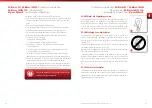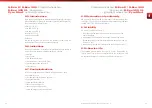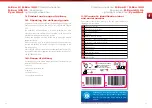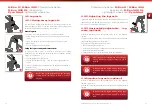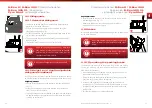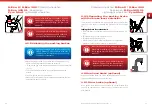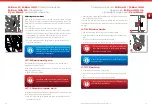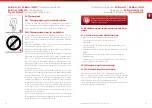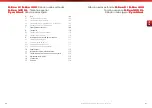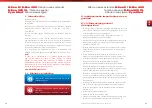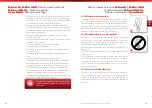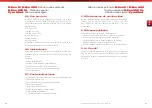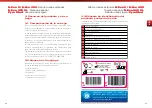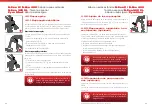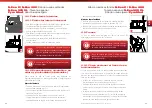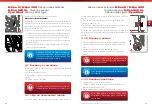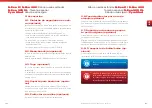
Bischoff & Bischoff GmbH |2021-07-27 Revision: 4
73
72
S-Eco 2 | S-Eco 300
| Standard wheelchair
S-Eco 300 XL
| Special size
Pyro Start
| Lightweight wheelchair
Standard wheelchair |
S-Eco 2 | S-Eco 300
Special size |
S-Eco 300 XL
Lightweight wheelchair |
Pyro Start
EN
8. Transport
8.1. Transporting the wheelchair
In order to make the wheelchair as manageable as possible to
transport, remove all removable parts (legrests, drive wheels, armrests,
loose accessories) and fold the wheelchair up (see Chapter 4.1).
8.2. Transportation in vehicles
To see whether your wheelchair is permitted for use as a seat in a
vehicle for transporting individuals with impaired mobility or not,
you can refer to the symbols on the product’s identification label (see
Chapter 3.3):
Wheelchair is designed for use as a seat in a vehicle for transporting
individuals with impaired mobility (Fig. A)
Wheelchair is not designed for use as a seat in a vehicle for transporting
individuals with impaired mobility (Fig. B)
All B+B products which have been approved as seating in vehicles have
been tested in compliance with ISO 7176-19. Tests in compliance with
ISO 7176-19 have been carried out with AMF-Bruns restraint systems.
The correct fitting of the restraint system is a pre-requisite for safe
transport of products in a vehicle for transporting individuals with
impaired mobility and is the basis for the approval. Fixing points on the
restraint system (Fig. A)
AMF-Bruns restraint systems provide load nodes (Fig. A) for fixing
the products in the vehicle for transporting individuals with impaired
mobility. The products must only be fixed to these load nodes for
restraint in the vehicle for transporting individuals with impaired
mobility. If possible, use a permanently installed car seat and its belt
system. Stow the wheelchair in the boot. Those individuals responsible
for the transportation should be familiar with the current legislation
for transport as well as with the operation of the vehicle and its
restraint system. Four-point restraint systems must be used to secure
the wheelchair to the vehicle.
For any queries regarding how to secure your product in the vehicle
for transporting individuals with impaired mobility, please contact B+B
Customer Service on +49 (0)700/60007070.
A
B
If your wheelchair is not crash-tested, it must not
be used as a vehicle seat under any circumstances.
There is a risk of death!
9. Maintenance instructions for the
user
9.1. Cleaning and disinfection
•
Wipe the frame parts of the wheelchair with a damp
cloth. If there is heavy contamination, also use a
mild cleaner.
•
Clean the wheels with a damp brush with plastic bristles (do not
use a wire brush).
•
Wash the push handles, armpad, seat and back cushion with a mild
cleaner.
•
For disinfection use a disinfectant listed by the Association for
Applied Hygiene.
•
Upholstery parts can be machine washed at 40 ° C. Not machine
dry, only drying at room temperature.
9.2. Checks before driving
9.2.1. Checking the brakes
Before setting off each time, check that the brakes work properly.
With the parking brakes applied, the wheelchair cannot be pushed
on dry surfaces. When the brakes are released, the wheelchair runs
without scraping noises and good directional stability.
If this is not the case, notify your dealer immediately and stop using the
wheelchair until it has been serviced!


